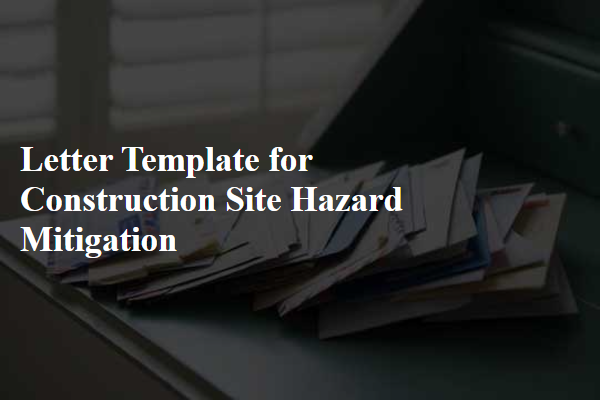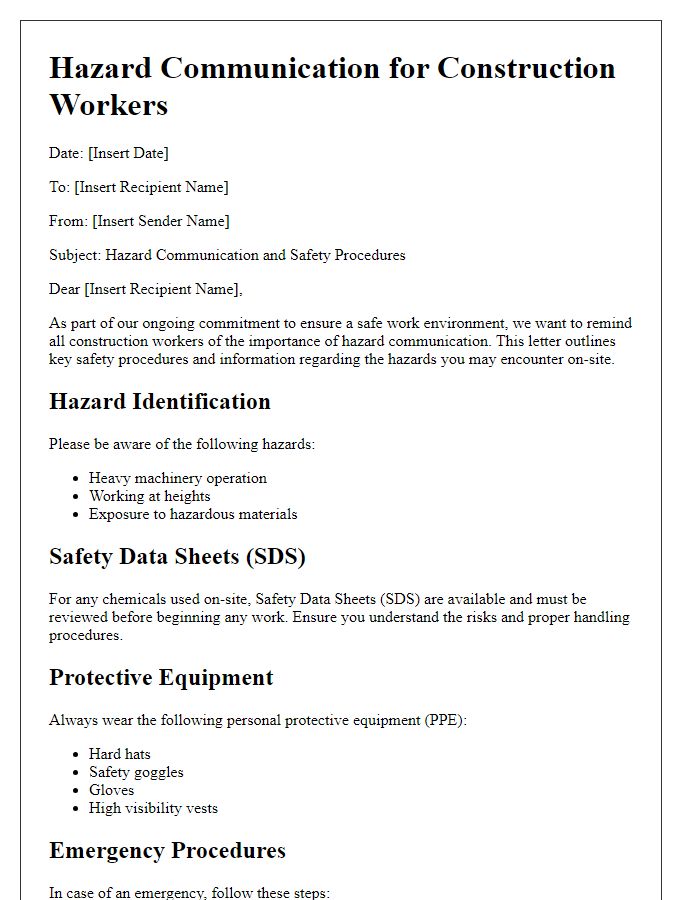Are you concerned about safety on your construction site? Addressing potential hazards is crucial for ensuring the well-being of everyone involved in a project. In this article, we'll discuss effective strategies for hazard mitigation that can help create a safer work environment. So, let's dive in and explore the steps you can take to prioritize safety on your siteâread on to learn more!

Identification of specific hazards
Construction sites present various hazards that require careful identification and mitigation to ensure worker safety. Common hazards include falls, which account for approximately 33% of construction-related fatalities, often related to unprotected edges or inadequate fall protection systems. Equipment hazards, such as those posed by cranes and forklifts, can result in accidents if proper training and operational protocols are not implemented. Additionally, electrical hazards can arise from exposed wiring or faulty equipment, potentially leading to electrocution, a risk accentuated in areas with wet conditions. Environmental hazards, including exposure to harmful substances like asbestos or silica dust, are significant, with regulations from organizations like OSHA outlining permissible exposure limits. Finally, inadequate safety measures during high-risk tasks such as demolition or excavation can lead to serious injuries. Identifying and addressing these hazards is crucial for maintaining a safe construction work environment.
Implementation of safety protocols
The implementation of safety protocols at construction sites is critical for minimizing hazards and ensuring worker safety. Comprehensive training programs must be established, emphasizing personal protective equipment (PPE) use, such as hard hats, safety goggles, and steel-toed boots. Regular safety audits (monthly or quarterly) should be conducted to identify potential risks, including fall hazards from heights over six feet or around heavy machinery. Clear communication of emergency procedures, including evacuation routes and first aid kits, is essential. Additionally, safety signage must be prominently displayed, indicating potential hazards and safety reminders. Enhanced supervision by trained safety officers can further reduce incidents, ensuring compliance with OSHA regulations and fostering a safety-first culture within the workforce.
Assignment of responsibilities
The assignment of responsibilities for hazard mitigation at construction sites is essential to ensure the safety of all personnel involved in the project. Site supervisors, such as those overseeing projects in urban areas like New York City, must conduct routine inspections to identify potential hazards, including unstable scaffolding and electrical risks. Safety officers, trained in OSHA (Occupational Safety and Health Administration) regulations, are responsible for implementing safety protocols and providing training sessions on proper equipment usage. Workers must wear personal protective equipment, such as hard hats and steel-toed boots, to safeguard against injuries. Additionally, emergency response coordinators should be designated to plan for potential accidents, ensuring that medical facilities are adequately prepared and accessible within a five-minute response time. Regular safety meetings are crucial for everyone to review responsibilities and communicate any changes in site conditions.
Regular training and drills
Regular training and drills are essential for enhancing safety protocols on construction sites, minimizing hazards associated with heavy machinery and manual labor tasks. Scheduled workshops (monthly or quarterly) educate workers about potential dangers, such as falls from heights or electrical risks when working near power lines. Hands-on drills, including emergency evacuation procedures and first-aid response simulations, prepare personnel for unexpected incidents, boosting their confidence and skill in critical situations. These initiatives foster a culture of safety, ensuring that all team members, from site managers to laborers, understand their roles and responsibilities in maintaining a secure working environment.
Continuous monitoring and evaluation
Continuous monitoring and evaluation of safety hazards on construction sites is crucial for maintaining worker protection and regulatory compliance. Regular assessments should encompass aspects such as equipment status, worker adherence to safety protocols, and environmental conditions. For instance, utilizing technology like drones for aerial surveillance can identify potential risks from unsafe scaffolding (a temporary structure used for support during construction) or improperly stored materials, which may lead to accidents. Routine inspections, ideally conducted weekly, are essential for detecting hazards related to noise levels (exceeding 85 decibels can cause hearing damage) and air quality (elevated levels of silica dust, harmful to respiratory health). Implementing a feedback loop allows workers to report hazardous conditions in real time, fostering a culture of safety awareness. Documentation of these evaluations should comply with OSHA (Occupational Safety and Health Administration) standards, ensuring continuous improvement in hazard mitigation strategies.
Letter Template For Construction Site Hazard Mitigation Samples
Letter template of safety training requirements for construction personnel.













Comments